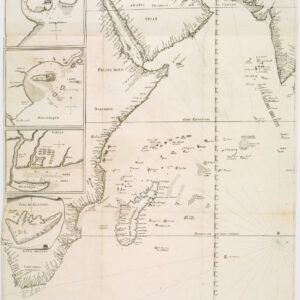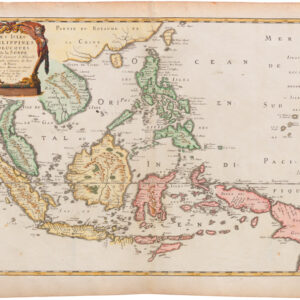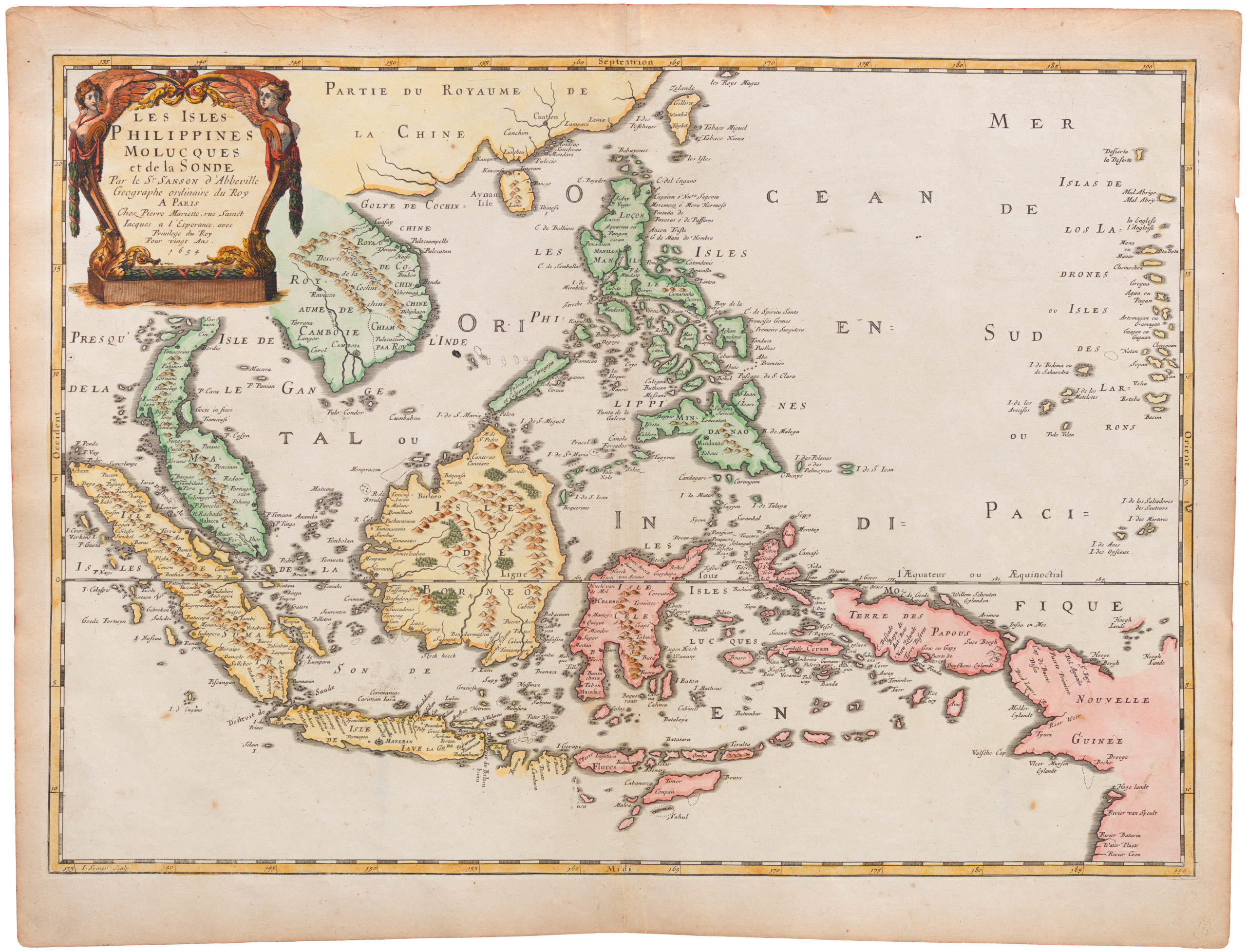Time-chart of Chinese cultural history from 1500 BC until modern times, issued after Nixon’s first visit.
The Sunday Times China Time Chart from 1500 B.C.
$675
1 in stock
Description
This densely filled and highly informative poster was issued by The Sunday Times newspaper in 1973, in the aftermath of President Richard Nixon’s pioneering visit the year prior. It consists of a chronologically structured timeline that provides a comprehensive overview of Chinese history and culture as it spans the period from 1500 BCE until the 1970s.
The chart maker divides into four primary columns, each with a different theme. Furthest to the left is the History column, in which densely printed text provides an overview of China’s historical development, broken down into its most significant dynastic periods. Under each dynastic headline is a brief report that relays the period’s significant events and lists the most influential people (usually founding rulers).
Moving from left to right, the historical descriptions of the first column are echoed in the next, which bears the headline Dynasties. This section offers a more simplified schematic overview of China’s dynastic history, in which one gets a sense of the complexity of the country’s political history. The chart maker has organized different periods of dynastic rule into elongated bars. Vertical bars represent the time of rule, and horizontal ones represent the geographical extent of their dominion. Even a quick look at this column shows that rival dynasties shared power over Greater China for extended periods, either as a result of transitioning from one ruling entity to another or, as was more commonly the case, due to the sheer vastness of the Chinese Empire.
The next column is the center of the composition and the widest of the four columns. It shows the development of Chinese Culture and includes various cultural phenomena recognizable to a western viewer. It works as a compelling juxtaposition to the final column, Contemporary Events, which contextualizes the cultural achievements of the Chinese with those of the rest of the world. Consequently, we might note that the Chinese discovery of silkworms and the beginning of commercial silk production corresponds chronologically to the Exodus or the Siege of Troy.
Along the right fringe of the central culture, we find a series of small vignettes illustrating the developments cited. These include hugely significant inventions, such as the compass, paper, and gunpowder. Similar vignettes are found in the comparative column to the right, including the funeral mask of Egyptian pharaoh Tut-Ankh-Amun or a Roman centurion. The presentation of global events for comparative purposes is kept at a more superficial level than the presentation of the Chinese counterparts. It serves to contextualize the Chinese events within a global history framework and not compete with them.
Furthest to the right, we find something we love here at Neatline: maps. These cartographic vignettes illustrate the full geographic scope of a dynasty or period. The maps also allow us to discern how the various forms of rulership manifested themselves in terms of territorial domain. They reflect how different periods in Chinese history have their own distinct character and dynamics, not just in terms of culture but in terms of scope, ethnicity, and political composition. From these thematic maps, it becomes clear that political entities such as the Sung or Ming dynasties constituted centralized empires with a strict territorial focus and a distinctly Chinese identity.
Contrasting these, we find the more culturally and ethnically inclusive periods, which tend to be more geographically encompassing. The best example is the Mongol Empire, structured as it was into distinct hordes with each domain of power. A quick look at the bottom map suggests that Mao Tse Tung built a similar encompassing rulership as the People’s Republic of China.
The Sunday Times newspaper commissioned and published this poster in 1973. It was printed as an off-set in London by CB Printers and was originally compiled by Victor Shreeve and Peter Snowball, with Dorothy Kushler authoring the associated texts. The entire process was informed by an expert in Chinese history: Professor William Watson of the School of African and Oriental Studies at the University of London.
This unique broadside is ultimately a celebratory presentation of Chinese cultural and political history in a simplified and schematic form. It justly celebrates China as one of the great cultural entities of the world but does so at the height of the Cold War and with a clear intention of building goodwill between Communist China and the West.
Context is Everything
This time chart of Chinese history was published at a crucial time in the historical relations between China and the United States. By the early 1970s, the reality of the People’s Republic was a fact, and Mao was its undisputed leader. The economy was stagnating, and the conflict between communism and capitalism had taken the form of dire military confrontations throughout Southeast Asia. The fear was that such confrontations might escalate and spread to China.
When this poster chart was issued, it would still be a few years before the Vietnam War was finally lost and America withdrew from Southeast Asia in defeat. However, while Americans at this stage remained determined to stamp out communism in the region, the real kicker behind this poster was Richard Nixon’s iconic week-long visit to China in February of 1972. The official state visit was organized for the Americans to gain more leverage over relations with the Soviet Union. Nevertheless, it also instilled hope to contain the conflict raging in Vietnam, Laos, and Cambodia. For ordinary Americans, one of the most enticing elements of the visit was the first opportunity for western audiences to get an impression of the People’s Republic.
Nixon’s visit was a watershed moment. It helped normalize the relationship between the United States and China, reducing the risk of a global cold war becoming hot. Normalizing relations was a priority, but like all other political strategies, it required popular support to consummate in the long term. Information campaigns were launched to illuminate the current negotiations and familiarise westerners with China on a more general level. This important poster is an integral part of that effort. The idea was that knowledge about each other would sustain the West’s new relationship with Maoist China and allow that relationship to grow.
Cartographer(s):
Condition Description
Very good.
References



![[Cook’s Discovery of Eastern Australia] Carte de la Nle. Galles Merid. ou de la Cote Oriental de la Nle. Hollande.](https://neatlinemaps.com/wp-content/uploads/2021/12/NL-01183_Thumbnail-300x300.jpg)
![[Cook’s Discovery of Eastern Australia] Carte de la Nle. Galles Merid. ou de la Cote Oriental de la Nle. Hollande.](https://neatlinemaps.com/wp-content/uploads/2021/12/NL-01183_Thumbnail.jpg)


